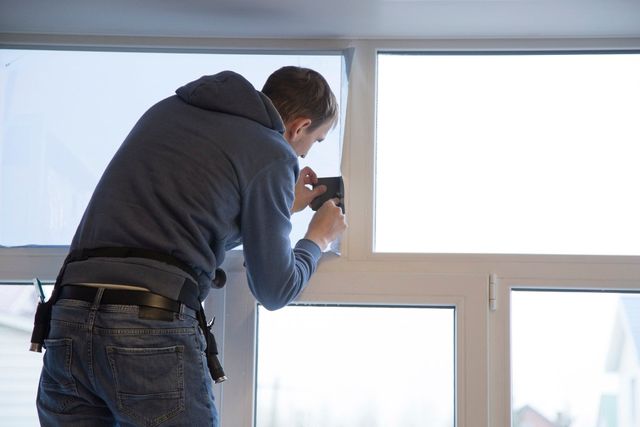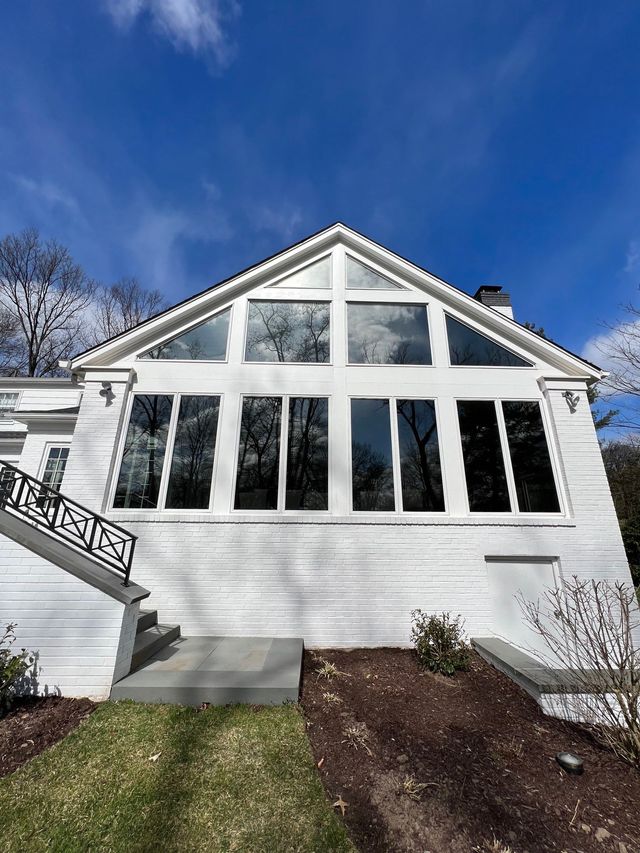Just How Residential Window Tinting Improves Your Home's Power Performance
Residential home window tinting provides a compelling solution for homeowners seeking to boost power effectiveness within their home. By applying specialized movies to windows, it properly decreases heat transfer, therefore maintaining indoor temperature levels and decreasing the demand for excessive home heating or cooling. This not only cuts energy intake yet additionally supplies a more comfy atmosphere by reducing glare. Recognizing the subtleties of just how tinting jobs and selecting the suitable type for your home can be crucial. Curiously, what aspects should one consider prior to making this financial investment?
Comprehending Home Window Tinting
Understanding home window tinting is vital for home owners looking for to improve both comfort and power effectiveness in their space. Residential Window Tint. Window tinting includes the application of a thin movie to the inside or exterior surface of glass windows. This film can substantially regulate the amount of sunlight and heat that enters a home, therefore affecting indoor environment problems
There are various kinds of home window tinting movies offered, each with unique homes. For example, dyed films absorb solar power, while reflective movies disperse it far from the glass surface. Ceramic films supply an equilibrium of visibility and heat rejection, making them a preferred selection among house owners. The performance of home window tinting is usually gauged by its Visible Light Transmission (VLT) portion, which indicates just how much light can pass via the movie.
Benefits of Power Effectiveness
Window tinting not just enhances visual appeals however likewise plays a significant function in improving power efficiency within property areas. By reducing warm transfer via windows, colored movies create a much more secure interior climate, which can cause considerable decreases in energy intake for home heating and air conditioning. This power effectiveness converts into lower energy bills, providing homeowners with considerable lasting cost savings.

Additionally, home window tinting improves the comfort of living rooms. By decreasing glare and obstructing dangerous UV rays, tinted home windows produce a more pleasant environment, which can bring about enhanced well-being for owners. The protection versus UV rays additionally assists maintain furniture and flooring from fading, adding to the long life of family items.
Just How Tinting Works
Tinting movies operate via a mix of advanced products and technologies made to control the quantity of solar power entering a home. Mostly composed of polyester, these movies typically integrate metal or ceramic fragments that mirror and absorb heat. This dual capacity permits them to significantly reduce the penetration of ultraviolet (UV) rays and infrared radiation while permitting noticeable light to travel through.
The performance of window tinting is determined by its solar warmth gain coefficient (SHGC), which indicates how much solar energy is sent via the home window. Reduced SHGC worths are better as they represent greater warmth denial. Additionally, window colors can feature a selection of shades, allowing home owners to tailor their visual preferences while improving energy efficiency.
Furthermore, these films serve as a barrier, avoiding heat loss during colder months by reflecting interior warmth back into the space. This thermal insulation impact matches the air conditioning advantages acquired during warmer months, adding to a well balanced interior climate year-round. By handling solar power efficiently, domestic home window tinting not only improves comfort however likewise plays an important role in reducing energy intake and reducing utility expenses.
Selecting the Right Color

There are different kinds of home window films available, including colored, metalized, and ceramic. go to this site Colored films are economical yet may have limited sturdiness. Metalized films supply far better heat being rejected yet can hinder electronic signals. Ceramic films offer superb warmth control without jeopardizing exposure and are very resilient, making them a preferred choice.
Visible light transmission (VLT) is an additional essential factor, as it suggests the quantity of all-natural light that can pass with the tinted glass. Property owners must pick a color with a VLT that complements their illumination choices while still giving ample glow decrease.
In addition, analyzing the solar warmth gain coefficient (SHGC) can assist figure out exactly how well a color can block heat from sunlight. A lower SHGC indicates far better warmth control, ultimately boosting power effectiveness.
Setup and Maintenance Tips
Appropriate installation and upkeep are vital parts in making the most of the advantages of residential home window tinting. Professionals likewise make use of specialized techniques and devices, which can enhance the toughness and efficiency of the tint.
Complying with installment, upkeep is crucial to extend the life of the window film. It is recommended to wait at least 30 days prior to cleansing the tinted home windows to permit the glue to heal fully.
Addressing these issues promptly can protect against further damage and keep power performance. By sticking to these installation and maintenance pointers, home owners can guarantee their home window tinting continues to offer considerable energy savings and comfort for years to come.
Conclusion
In final thought, household home window tinting serves as an efficient service for improving power performance within homes. By reducing heat transfer and web obstructing harmful UV rays, home window movies contribute to reduce power consumption and boosted indoor convenience.
Window tinting includes the application of a slim movie to the interior or exterior surface area of glass windows. By lowering warm transfer via windows, tinted movies produce a much more secure indoor environment, which can lead to significant reductions in power intake for heating and cooling.The efficiency of home window tinting is gauged by its solar heat gain coefficient (SHGC), which suggests exactly how much solar power is sent through the window. By managing solar energy properly, residential window tinting not only enhances comfort however likewise plays an important duty in decreasing energy usage and reducing utility expenses.
By minimizing warmth transfer and obstructing harmful UV rays, window films add to reduce energy usage and improved indoor comfort.